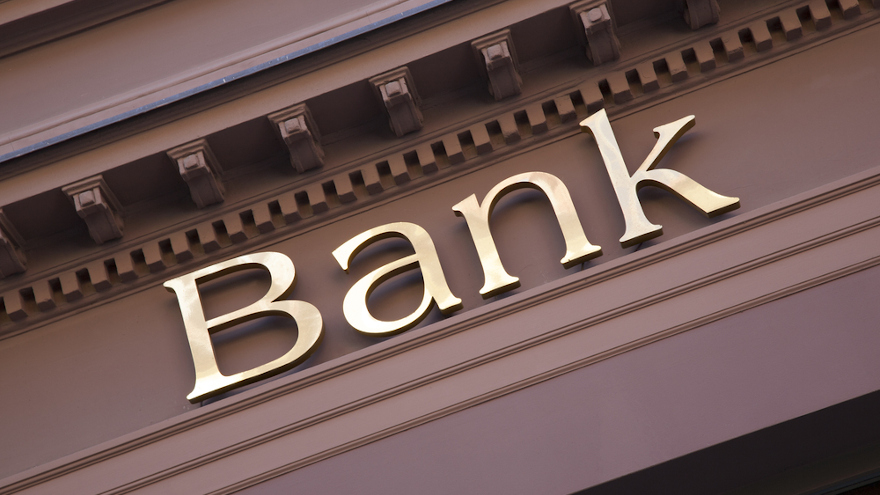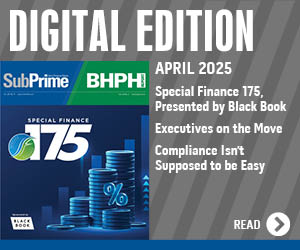Latest views from S&P Global Ratings on auto ABS & banking sector

Along with taking a deep look at the banking sector, S&P Global Ratings also published its latest views on U.S. auto loan asset-backed securities (ABS).
Analysts arrived at four assertions when looking at ABS performance for June. They included:
—Performance weakened for the month of June with prime and subprime annualized losses increasing month-over-month and year-over-year. In fact, S&P Global Ratings noticed annualized prime losses were on par with June 2019, and subprime losses were nearly the same as 2019, as well.
—60-day delinquencies rose to the highest June level ever in analysts’ composite data for subprime and the highest June level since 2011 for prime.
—Cumulative net losses for the 2022 vintage, as reflected in its auto loan static indexes, weakened relative to prior vintages, according to S&P Global Ratings.
Analysts said half of the prime and most of the subprime issuers are reporting higher losses on this vintage than for 2016, which was the last annual cohort that wasn’t favorably impacted by COVID-19-related stimulus.
“The deterioration reflects diminishing pandemic-related savings, inflationary pressures, aggressive loan growth, and lower used vehicle value,” S&P Global Ratings said in a news release.
—July’s analysis resulted in 26 upgrades and 49 affirmations, bringing the total number of U.S. auto loan ABS-related upgrades, downgrades, and affirmations to 177, six, and 243, respectively.
While tough for regional banks, most U.S. bank rating outlooks are stable
In a separate analysis, S&P Global Ratings examined the banking industry, articulating how conditions are more challenging for regional institutions versus their counterparts with national footprints.
S&P Global Ratings said the sharp rise in interest rates and quantitative tightening deployed since March 2022 to combat high inflation are weighing on many U.S. banks’ funding, liquidity and spread income. Analysts said these factors have also caused the value of banks’ assets to fall and raised the odds of asset quality deterioration.
Deposits held by Federal Deposit Insurance Corp. (FDIC)-insured banks fell 6% between the first quarter of 2022 and the second quarter of this year, according to S&P Global Ratings, which said, “They’re likely to continue declining as long as the Federal Reserve is quantitatively tightening.”
Analysts explained depositors have also shifted their funds into higher-interest-bearing accounts, increasing banks’ funding costs. Non-interest-bearing deposits fell 23% in the past five quarters while certificates of deposits and brokered deposits — both of which tend to be higher cost — have roughly doubled, albeit from low levels, according to tracking by S&P Global Ratings.
Analysts pointed out that banks have increasingly relied on wholesale borrowings, helping to drive their funding costs up more than 40 basis points in the second quarter and more than 180 basis points since the Fed began raising rates.
“While many measures of asset quality still look benign, higher rates are pressuring borrowers, and nonperforming assets, delinquencies, and charge-offs are rising toward at least their historical averages. Amid higher for longer interest rates, we expect further asset quality deterioration,” S&P Global Ratings said in another news release.
“Banks with material exposures to commercial real estate (CRE), especially in office loans, could see some of the greatest strains on asset quality, depending on the makeup and quality of underwriting on their portfolios,” analysts continued.
S&P Global Ratings said about 90% of the banks it rates have stable outlooks while only 10% have negative outlooks and none have positive outlooks. The banks that analysts downgraded all have stable outlooks at their lower ratings levels.
“The preponderance of stable outlooks reflects that stability in the U.S. banking sector has improved significantly in recent months, as evidenced by more modest deposit declines than feared following the bank failures of March and April 2023, continued solid earnings, and still relatively good funding metrics by historical standards. Most rated banks have manageable exposures to the riskiest parts of CRE, especially office loans, and they have taken steps to build capital and reduce risks in general,” S&P Global Ratings said.
“Profitability will likely worsen further in 2024, but we still expect most rated banks to generate a healthy level of capital through earnings retention. Some of the banks we have taken negative actions on may face greater pressure from falling earnings given that they already have below-peer returns on equity,” analysts went on to say.


